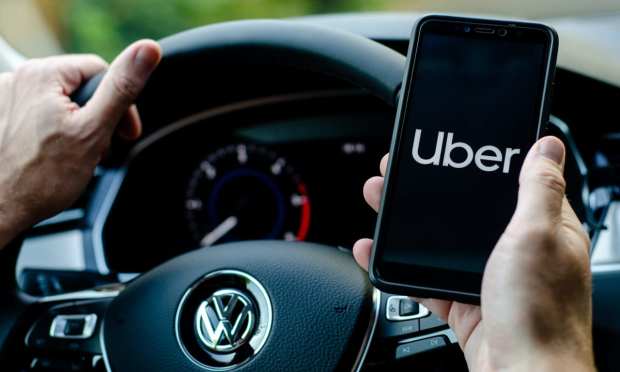Help Wanted: Uber Posts Record March And Unprecedented Signing Bonus For Drivers

The year 2020 was not a terrific one for the ridesharing business as consumers on lockdown didn’t need quite so many rides, and sitting in a very confined space with a stranger for only a short ride seemed an overly risky proposition.
Uber pivoted quickly to its food delivery business during the pandemic period, as serving consumer ordering soon grew to be a bigger business than offering up rides to those looking to go out.
But vaccines are being distributed daily, and according to Uber’s most recent 8-K filing, the company’s gross bookings in March reached their highest monthly level in the company’s nearly 12-year history. The company’s mobility business also passed the $30 billion annualized gross bookings run rate, with average daily gross bookings up 9 percent month over month.
It’s good news, and in some sense a little bit too much good news too fast for Uber, which according to the 8-K is having some trouble keeping up with demand.
“As vaccination rates increase in the United States, we are observing that consumer demand for mobility is recovering faster than driver availability, and consumer demand for delivery continues to exceed courier availability,” the company’s 8-K stated.
The filing indicated Uber is undertaking measures to boost those ridership figures, and that it anticipates reaching quarterly adjusted EBITDA profitability in 2021.
As for the efforts to boost drivership, Uber offered a bit more color on that last week in a blog post on its plans to brings its drivers back to the road with an aggressive investment strategy.
“We’re launching a $250 million driver stimulus to boost already high earnings for drivers. Boosted incentives and guarantees will help welcome existing drivers back to Uber and ensure first-time drivers do well as they learn the ropes,” Uber’s Vice President of U.S. and Canada Mobility Dennis Cinelli said in the post.
Earnings for drivers at present, the post stated, are at all-time highs in some cities, with drivers in Philadelphia making north of $30 an hour at present. But this massive earnings bump is likely a temporary phenomenon that will level out as the recovery continues and more drivers start hitting the road again, making earnings likely to recede over time to pre-pandemic levels. Uber is hoping the additional boosted incentive will motivate more drivers in more quickly.
To that end, Uber is also working to get more drivers vaccinated, making it easier to navigate the process with a streamlined appointment booking path via a partnership with Walgreens.
Additionally, Uber and Marriott announced in a press release that members of Marriott Bonvoy can now earn points via Uber toward free nights at Marriott properties either by taking Uber rides or ordering delivery using Uber Eats.
The perk is available in the United States, and those who sign up and have at least one qualifying transaction by May 31 will get 2,000 Bonvoy bonus points, the release stated.
“We are continuing to see our members return to travel and are excited to give them more opportunities to earn points toward free nights through Uber rides and Uber Eats,” said David Flueck, senior vice president of Global Loyalty at Marriott International, in the release. “This tremendous relationship with Uber reflects our goal to engage members and enable them to earn and redeem points whether traveling or through everyday activities at home.”
And while Uber’s news has been good, the company isn’t alone in enjoying the rising tide in consumers looking for rides, nor the only firm to suffer from the challenge of bringing ridesharing drivers that diverted to food delivery over the course of the pandemic back into the fold. Uber rival Lyft has reportedly been suffering from the same shortages Uber has and is also spending millions of dollars to lure their erstwhile drivers back, offering direct cash bonuses, Mashable reported.
Both firms, according to data from app analytics firm Apptopia, have some serious work to do. Daily active users on the Lyft and Uber driver-only apps for the past three months have dropped 42.3 percent and 37.5 percent, respectively, compared to the year before, Mashable reported. There are a lot of drivers out there that need brining home.
But if Uber and Lyft can make booming consumer demand directly pay for those drivers? The prudent expectation, given the spiking demand, is that a lot of ridesharing drivers will be persuadable that it is time to get on the road again.
